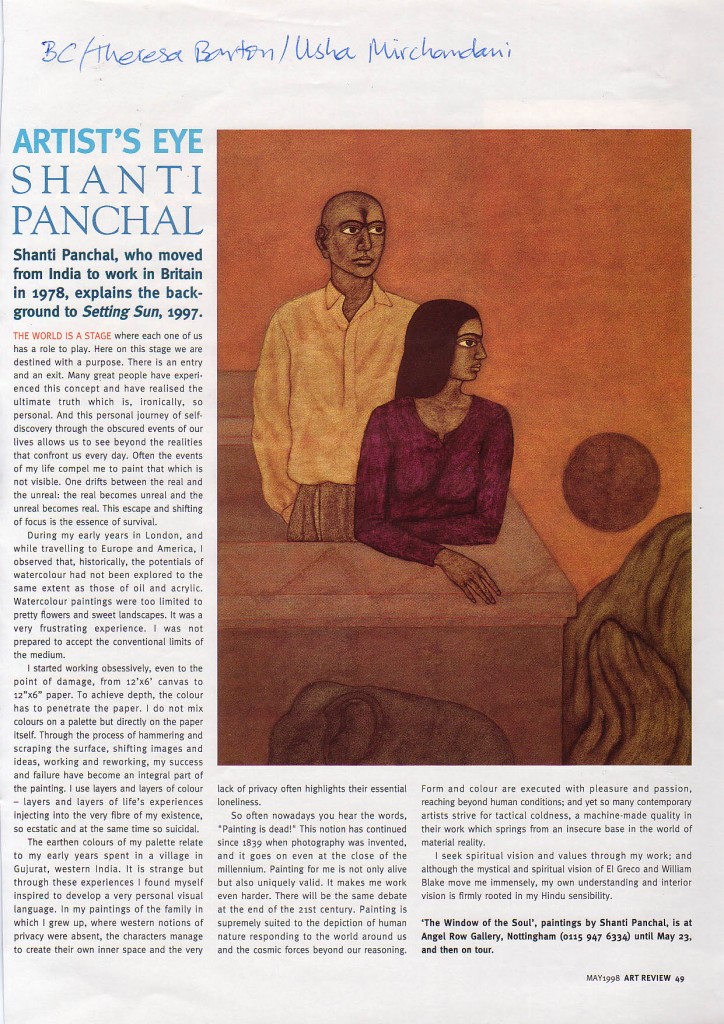ARTIST’S EYE
SHANTI PANCHAL
Shanti Panchal, who moved from India to work in Britain in 1978, explains the background to Setting Sun, 1997.
THE WORLD IS A STAGE where each one of us has a role to play. Here on this stage we are destined with a purpose. There is an entry and an exit. Many great people have experi¬enced this concept and have realised the ultimate truth which is, ironically, so personal. And this personal journey of self-discovery through the obscured events of our lives allows us to see beyond the realities that confront us every day. Often the events of my life compel me to paint that which is not visible. One drifts between the real and the unreal: the real becomes unreal and the unreal becomes real. This escape and shifting of focus is the essence of survival.
During my early years in London, and while travelling to Europe and America, I observed that, historically, the potentials of watercolour had not been explored to the same extent as those of oil and acrylic. Watercolour paintings were too limited to pretty flowers and sweet landscapes. It was a very frustrating experience. I was not prepared to accept the conventional limits of the medium.
I started working obsessively, even to the point of damage, from 12’x6′ canvas to 12″x6″ paper. To achieve depth, the colour has to penetrate the paper. I do not mix colours on a palette but directly on the paper itself. Through the process of hammering and scraping the surface, shifting images and ideas, working and reworking, my success and failure have become an integral part of the painting. I use layers and layers of colour – layers and layers of life’s experiences injecting into the very fibre of my existence, so ecstatic and at the same time so suicidal.
The earthen colours of my palette relate to my early years spent in a village in Gujurat, western India. It is strange but through these experiences I found myself inspired to develop a very personal visual language. In my paintings of the family in which I grew up, where western notions of privacy were absent, the characters manage to create their own inner space and the very lack of privacy often highlights their essential loneliness.
So often nowadays you hear the words, “Painting is dead!” This notion has continued since 1839 when photography was invented, and it goes on even at the close of the millennium. Painting for me is not only alive but also uniquely valid. It makes me work even harder. There will be the same debate at the end of the 2ist century. Painting is supremely suited to the depiction of human nature responding to the world around us and the cosmic forces beyond our reasoning.
Form and colour are executed with pleasure and passion, reaching beyond human conditions; and yet so many contemporary artists strive for tactical coldness, a machine-made quality in their work which springs from an insecure base in the world of material reality.
I seek spiritual vision and values through my work; and although the mystical and spiritual vision of El Greco and William Blake move me immensely, my own understanding and interior vision is firmly rooted in my Hindu sensibility.
‘The Window of the Soul’, paintings by Shanti Panchal, is at Angel Row Gallery, Nottingham (0115 947 6334) until May 23, and then on tour.
